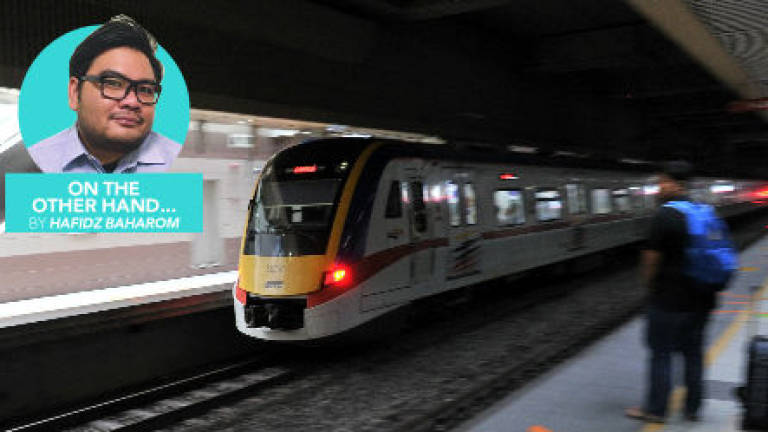Public transport the way forward

SERDANG MP Ong Kian Ming came out blazing last Thursday saying that public transport figures were lagging after billions spent. Sadly, he was looking at mere figures rather than trying to make sense of it all.
First, the promotional pricing period for the Mass Rapid Transit (MRT) Line 1 has ended. Thus, ridership figures have declined. But the MRT has also eaten away figures of other rail services.
There is no longer a need for those in Sungai Buloh and Damansara to go to a nearby Komuter station to head into Kuala Lumpur – this can now be done via MRT. At the same time, the Monorail would also see a decline in users because its most popular stop, Bukit Bintang, is also being serviced by the MRT.
The Bukit Bintang MRT station is linked to KLCC via elevated walkways, which no longer makes it necessary to switch trains at KL Sentral and take the LRT.
There are also developments to take note – KTM Komuter is carrying out maintenance of its lines, leading to service intervals of between 30 and 45 minutes. Thus, commuters in a hurry may use their cars.
Perhaps the MP should have factored these before listing out statistics.
What we are seeing is a normalisation process. As more people discover what is convenient and what isn't, they will adapt. Ridership figures will fluctuate because some lines are not well connected, schedules are not yet at optimum or Malaysians prefer to drive alone and be stuck in jams rather than be cramped in coaches during peak hours.
Driving is not cheaper if you calculate the cost of your car, its maintenance, petrol, road tax, motor insurance, and toll and parking rates in the city. Plus, the stress of driving in traffic compared to sitting in a train catching up on work via your mobile or reading a book.
The public transport network is far from complete. By 2021 or 2022 we will have a larger network in the Greater Klang Valley with a second MRT line all the way to Putrajaya and LRT Line 3 to Klang and Shah Alam.
And even then, it is far from enough because we have Malaysians coming to work in Kuala Lumpur from multiple outskirts that deserve better access. Honestly, I wouldn't be satisfied until we have highspeed rail service from Penang to Johor Baru, and from Kota Baru to Kuala Lumpur via Kuala Terengganu.
More importantly, we should be investing more in public transport not just rail, but also rapid bus transits. We have for too long abandoned the need for public transport not just in Peninsular Malaysia but also Sabah and Sarawak. That must change.
While public transport is meant to be affordable, it isn't supposed to be dirt cheap. And it is a replacement for the car in total, not just for workdays.
It should replace the car, not add on as a mere alternative device which doubles your cost.
That being said, Kian Ming has also forgotten that the public transport network is a thing for the future. It is not just for this generation but generations to come, which will now have to change and adapt as we move away from a dependency on oil and even cars.
It is a future where driving will be more expensive, with a congestion charge, higher parking fees and hopefully sooner rather than later, a tax on petrol.
It is also a future where we look at peak hour and off-peak hour rates for train service, and even a cap on daily spending for the Greater Klang Valley network excluding the ERL Line. It is awkward that an MP is expecting human behaviour and commuting habits conditioned over decades to change in a couple of months.
I guess it is easier to criticise than be constructive but then again, that is the typical behaviour to expect from people who oppose for the sake of opposing.
Hafidz Baharom is a public relations practitioner. Comments: letters@thesundaily.com